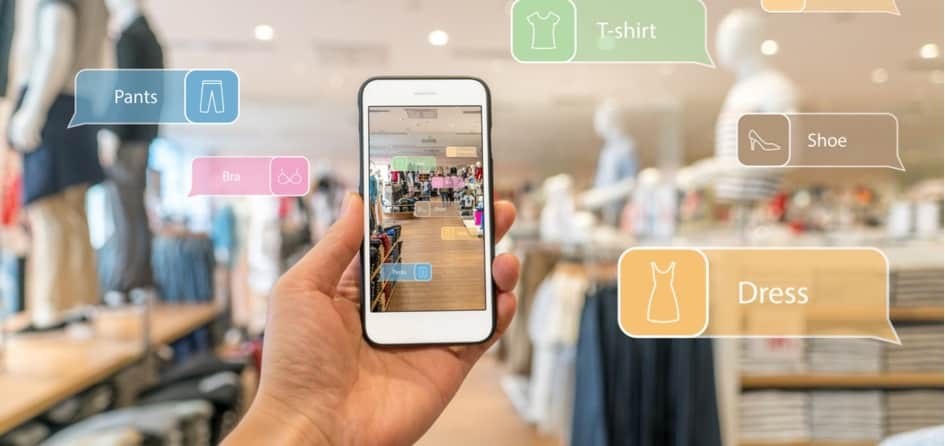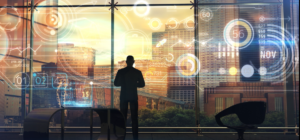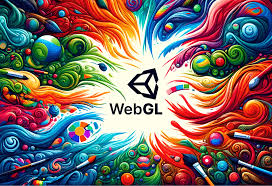



XR, Ai & CRM for Retail
The convergence of XR & Ai empowers retailers with:
Personalized marketing experiences for traffic building
Personalized sales & marketing capabilities
Real-time first-person data & analytics
Advanced relationship building tools
Advanced POS, inventory, and operations tools
Key Technologies
Retail XR
Enhancing Customer Engagement through Immersive Experiences
At its core, XR technology offers an unparalleled level of immersion, transforming passive shoppers into active participants. Retailers leveraging AR can overlay digital information onto the physical world, guiding customers through an enriched, interactive environment.
Imagine walking into a store and using your smartphone to see products come to life with animations, revealing hidden features or exclusive deals. VR takes this a step further by transporting users into entirely virtual spaces, perfect for exclusive product launches or virtual try-ons, offering a try-before-you-buy experience without the physical inventory.
Personalizing the Shopping Journey
Personalization is key in retaining customer interest, and XR technologies excel in delivering tailor-made experiences. By analyzing data on customer preferences and behaviors, retailers can create personalized AR overlays or VR environments. For example, a customer interested in sustainable living could be guided to eco-friendly products with special promotions highlighted through AR. This level of personalization not only enhances the shopping experience but also fosters a deeper connection between the brand and its customers.
Expanding Reach with Virtual Events
The constraints of physical space and geography can limit the audience for in-store events. XR technology, particularly VR, demolishes these barriers, enabling customers from around the globe to participate in virtual store openings, product launches, or fashion shows. These virtual events can accommodate limitless attendees, offering interactive features and live feedback, thus widening the reach and impact of retail promotions beyond traditional confines.

Key Technologies
Retail Ai
Unleashing AI in Store Operations: Revolutionizing Retail from the Ground Up
The retail industry is undergoing a seismic shift, thanks to the advent and integration of artificial intelligence (AI) in store operations. AI, with its unparalleled ability to analyze vast amounts of data, predict trends, and automate tasks, is revolutionizing the way retailers manage their businesses, enhance customer experiences, and streamline processes. This technology is not just a tool for efficiency; it’s a strategic asset that can drive growth, innovation, and competitive advantage. Let’s delve into the various uses and benefits of AI in retail store operations, highlighting how this technological marvel is transforming the sector.
Personalized Customer Experiences
At the heart of retail success is the ability to offer personalized shopping experiences that meet or exceed customer expectations. AI powers these personalized experiences through data analysis and learning algorithms that understand customer preferences, purchase history, and even real-time behavior within the store. By leveraging AI, retailers can offer tailored recommendations, promotions, and services, making each customer feel understood and valued. This not only enhances customer satisfaction but also significantly boosts loyalty and sales.
Efficient Inventory Management
Inventory management is a critical, yet challenging, aspect of retail operations. AI transforms this daunting task into a streamlined process through predictive analytics and automated restocking systems. By analyzing sales data, seasonal trends, and supply chain logistics, AI can accurately forecast demand, optimize stock levels, and even automatically reorder products. This precision reduces the risk of overstocking or stockouts, ensuring that retailers can meet customer demand without tying up excessive capital in inventory.
Dynamic Pricing Strategies
AI enables dynamic pricing strategies, which adjust prices in real-time based on demand, competition, inventory levels, and other market factors. This approach allows retailers to maximize profitability by capitalizing on high-demand periods and clearing out slow-moving stock through timely discounts. Dynamic pricing, powered by AI’s real-time analytics, ensures that retailers can stay competitive and responsive to market changes, ultimately driving revenue and customer satisfaction.
Enhanced In-Store Experiences with Smart Technologies
AI-driven technologies, such as smart shelves and AR applications, are redefining the in-store shopping experience. Smart shelves equipped with weight sensors and RFID tags can track inventory in real time, alerting staff to restocking needs and preventing theft. AR applications, on the other hand, can enhance product discovery and visualization, allowing customers to see how products look in different environments or even try on clothes virtually. These technologies not only make shopping more interactive and fun but also streamline operations and inventory management.
Operational Efficiency and Cost Reduction
AI significantly contributes to operational efficiency by automating routine tasks, such as customer service inquiries, checkout processes, and even cleaning schedules. By deploying chatbots, self-checkout systems, and robotic cleaners, retailers can allocate human resources to more complex, value-added tasks. This shift not only reduces labor costs but also improves service quality and operational efficiency, allowing stores to operate smoothly and effectively.
Data-Driven Decision Making
Perhaps one of the most transformative benefits of AI in retail is its ability to facilitate data-driven decision making. Through the analysis of sales data, customer feedback, and market trends, AI provides actionable insights that can guide strategic decisions. Whether it’s expanding product lines, optimizing store layouts, or launching marketing campaigns, AI ensures that decisions are informed by real, actionable data, enhancing the likelihood of success.
Conclusion
The integration of AI in store operations marks a new era in retail, one characterized by efficiency, personalization, and innovation. From enhancing customer experiences to optimizing inventory and pricing strategies, AI is not just transforming operations; it’s reshaping the retail landscape. As retailers continue to harness the power of AI, the potential for growth and innovation is boundless. The future of retail is here, and it’s powered by artificial intelligence, promising a more efficient, personalized, and dynamic shopping experience for all.
Key Technologies
Retail Ai & CRM
Personalized Marketing Campaigns
The system utilizes the insights generated to create highly personalized marketing campaigns that target customers with the right message at the right time, through their preferred communication channel.
Customer Journey Mapping
By mapping customer journeys across various touchpoints the system can understand and enhance the overall customer experience.
Customer Segmentation
The AI creates detailed customer profiles and segment customers based on various criteria like demographics, purchase history, and preferences. It can expand its data sets to include outside informative data as well.
Machine Learning and Analytics
We use machine learning algorithms to analyze customer data and identify patterns. This involves predictive analytics for customer behavior, preference analysis, and trend spotting.
Personalized Recommendation Engine
Our recommendation engine (RetailAi) suggests products based on individual customer profiles and preferences, both online and in-store.
Key Benefits
Customer Insight: Develops detailed profiles based on biographical data and preference patterns, enhancing the understanding of each customer.
Personalized Recommendations: Uses analyzed data to provide tailored suggestions both in-store and online, improving the shopping experience.
Enhanced Customer Relations: Acts as a customer relations wizard, making personalized sales pitches and offers that resonate with individual customers.
Seamless Integration: Connects flawlessly with the website, POS, and inventory systems for a unified operational approach.
Direct Communication: Enables targeted direct communications with customers, fostering a stronger, more personal connection.
Learn More About Our Technology

Cloud Computing in Retail
For the retail industry, cloud computing is not just an operational tool; it is a strategic asset that can redefine how retailers operate and engage with their customers. From scalability and cost efficiency to enhanced customer experiences and powerful analytics, the benefits of cloud computing support the dynamic needs of the modern retail environment.

5G Technology Advances in Retail
5G is poised to transform how retail businesses operate and interact with customers. From enhancing the customer experience to optimizing operations, the potential applications of 5G in retail are vast and varied. Here is how this groundbreaking technology is set to reshape the retail landscape.

Digital Twinning a Retail Store
SugarXR for Digital Twinning a Retail Store Digital Twinning Giving retailers the ability to create an online virtual complete twin of the physical store. Enhancing the In Store Experience Shopping in the Virtual Twin of a Physical Store Virtual Pop-Up Stores in Real-World Spaces Enhancing the In Store Experience From optimizing store layouts and managing inventories to enhancing online shopping

Retail AI & CRM for Relationship Building
Unlock the secret to unparalleled customer engagement with SugarXR’s suite of services. From crafting detailed customer profiles to delivering personalized recommendations seamlessly integrated across platforms, SugarXR revolutionizes customer relations through direct and tailored communication strategies.

The Magic of WebGL
As a Cloud based engine WebGL brings the power of 3D graphics to web browsers without the need for additional plugins. What in the WebGL?
QUESTIONS?
Whether you’re curious about features, characters, getting started, or even press, we’re here to answer any questions.